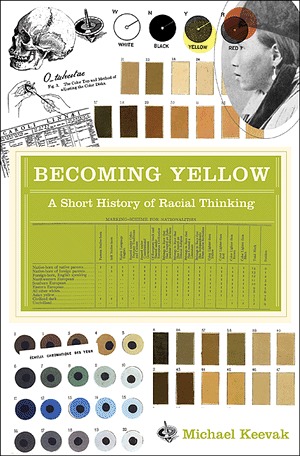Becoming Yellow: A Short History of Racial Thinking
Posted: December 13th, 2012 | No Comments »I listened to a very interesting talk at the weekend by David Porter on Chinoiserie in 18th Century England. Porter is a professor at the University of Michigan who specialises in the problem of how to think China and England together in the eighteenth century and early modern period. He is the author of a number of books including Ideographia: The Chinese Cypher in Early Modern Europe and, more recently, Comparative Early Modernities 1100-1800. Anyway during his talk he noted a book worth reading that I had not heard of but sounds fascinating – Becoming Yellow: A Short History of Racial Thinking by Michael Keevak – detail below as ever. Sounds like an interesting book recommended by an interesting academic.
In their earliest encounters with Asia, Europeans almost uniformly characterized the people of China and Japan as white. This was a means of describing their wealth and sophistication, their willingness to trade with the West, and their presumed capacity to become Christianized. But by the end of the seventeenth century the category of whiteness was reserved for Europeans only. When and how did Asians become “yellow” in the Western imagination? Looking at the history of racial thinking, Becoming Yellow explores the notion of yellowness and shows that this label originated not in early travel texts or objective descriptions, but in the eighteenth- and nineteenth-century scientific discourses on race.
From the walls of an ancient Egyptian tomb, which depicted people of varying skin tones including yellow, to the phrase “yellow peril” at the beginning of the twentieth century in Europe and America, Michael Keevak follows the development of perceptions about race and human difference. He indicates that the conceptual relationship between East Asians and yellow skin did not begin in Chinese culture or Western readings of East Asian cultural symbols, but in anthropological and medical records that described variations in skin color. Eighteenth-century taxonomers such as Carl Linnaeus, as well as Victorian scientists and early anthropologists, assigned colors to all racial groups, and once East Asians were lumped with members of the Mongolian race, they began to be considered yellow.
Demonstrating how a racial distinction took root in Europe and traveled internationally, Becoming Yellow weaves together multiple narratives to tell the complex history of a problematic term.

Leave a Reply